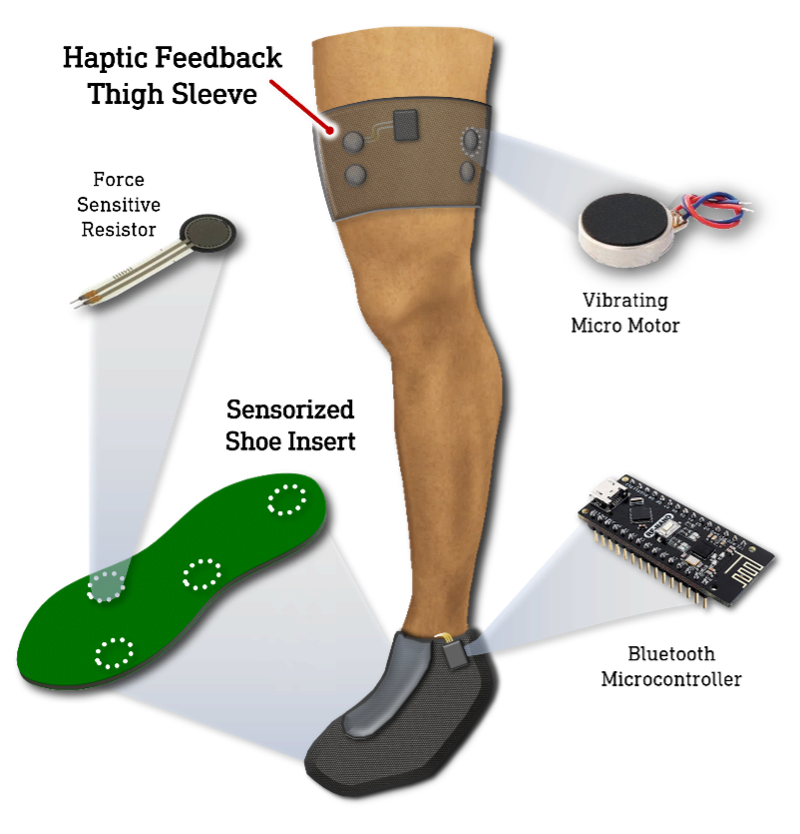Eliminating the guesswork in recovery for foot and ankle injuries with novel FAO device
Of the 2 million individuals experiencing ankle sprains in the U.S. each year, many have limited guidance in their recovery to not overstress the injury. Foot and ankle injuries, as well as gait-impacting leg injuries, can experience substantial strain during recovery that delays healing, increases risk of future injuries, and impacts the patient’s permanent gait. The few solutions on the market can have a high cost, are limited for research/clinical assessments by inpatient services, and/or are limited to an indiscriminate weight-bearing measurement. Without constant portable monitoring relaying behavior-modifying notifications, the available options may not prove useful to the patients and athletes that are committed to a faster, informed, and complete recovery.
Portable FAO with continuous plantar-pressure monitoring cautions patients of real-time strain that impedes recovery
This FAO has four sensor zones (heel, toes, medial, and lateral) that monitor plantar pressure for users with a foot or ankle injury. It provides discreet haptic feedback within a fitted leg sleeve to aid in real-time gait modifications, thus limiting injury strain. Immediately improving the patient’s steps can reduce the likelihood of the inversion/eversion that may cause longer recovery or permanent complications.
The device’s clever insole design permits it to fit existing footwear apart from a prescribed walking boot, so it is more economical with an expanded commercial market. Providing the broader plantar-pressure analysis in real time gives patients valuable information between clinic visits, provides athletes with game-changing injury prevention intelligence, and helps diabetic patients avoid constant pressure wound triggers. Peripheral neuropathy and any surgeries impacting gait could realize benefits. Even knee osteoarthritis therapy could benefit from strain reduction if the patient makes reactive gait changes due to this FAO.
- Portable: Unlike inpatient gait monitoring, which limits feedback to clinical visits, this device permits patients to receive real-time notification from the four measured sensory zones (heel, toes, medial, and lateral) as they recover at home for clinical monitoring without requiring in-office visits.
- Broad application: Continuous plantar-pressure monitoring with haptic feedback to encourage instant gait modifications can be applicable to ankle-foot or other gait-impacting injury patients, athletes focused on injury prevention, diabetics wanting to reduce pressure wounds, osteoarthritis patients concerned about knee strain, and patients with peripheral neuropathy improving their gait mechanics.
- Discreet: The silent haptic alerts are a welcomed discreet solution compared to the existing products with visual or auditory notifications that can be disruptive to day-to-day rehabilitation (e.g., walking while monitoring a screen).
- Continuous guidance: Use of the device during most daily activities improves patient compliance towards weight bearing and gait mechanics goals.
- Orthopedic injuries (foot and ankle)
- Gait-impacting leg injuries
- Sports injury prevention
- Pressure wound prevention for diabetics
- Peripheral neuropathy
- Knee osteoarthritis

Foot-ankle orthosis with flexible sensory insole and fitted sleeve with discreet haptic feedback built-in.
